Many parents have a strong reaction against gender-neutral clothes, but American kids dressed like “sexless cherubs” before capitalism and toxic masculinity took over.
Earlier this month, the owner of a conservative apparel company posted a video of himself walking around the children’s clothes section of Target, criticizing the company’s choice to put rainbows on boy’s clothing.
By allowing rainbows to mingle with sharks and trucks on screen-printed tees, the disgruntled dad said he believes Target is attempting to “destroy masculinity.” Parents ― fathers especially ― need to “stand up against this ‘wokeness,’” he said in the clip below.
The Instagram video was reposted on Twitter, where most of the replies mocked him or were along the lines of, “Hey man, you don’t have to buy it.”
But others looked at the video and saw a teachable moment. The decision by big box retailers like Target to carry gender-neutral clothing actually has historic precedent: Our great, great grandparents in the 19th century favored a gender-neutral style of dressing young children, too.
As menswear writer Derek Guy noted in his retweet of the Target video, “This is how Franklin D. Roosevelt dressed as a child.”
“Children at one point did not wear heavily gendered clothing and yet masculinity still existed,” Guy said in a follow-up tweet.
Jessica McCrory Calarco, an associate professor of sociology at the University of Wisconsin-Madison, weighed in on the little-known history, too.
“As I teach my students, kids’ clothing only became gendered when capitalists realized they could double their money by selling separate clothes for girls and boys,” she tweeted. “Before that, kids wore gender-neutral dresses, which better accommodated growth spurts and toilet training.”
The outfits were favored for practicality; white fabric was cheaper than dyed fabric and could easily be bleached when kids inevitably dirtied their clothes, the professor said.
Today you can find archival photos of everyone from Harry Truman and Lyndon B. Johnson to hyper-macho writers like Ernest Hemingway wearing the everyday white gowns as tykes.
Victorian parents weren’t necessarily looking to dress their children in gender-neutral garb; instead, they wanted their children to just look like “a baby” ― or “a sexless cherub” as dress historian Jo Paoletti writes in her fascinating book “Pink and Blue: Telling the Boys from the Girls in America.”

“Our great-great grandparents did not dress their babies like little men and women, as we do now, because it was wrong to do so,” Paoletti told HuffPost in an email interview. “Not just ‘impolite’ wrong, but morally wrong.”
For centuries, styles for babies and small children up til about age 5 were based on adult women’s dresses because women were seen as the innocent sex.
For American babies and small children of the time, the everyday white gown was viewed like a T-shirt would be today, Paoletti explained ― a gender-neutral piece that could be made more masculine or feminine depending on the selection of trims and details.
By the sounds of it, it certainly seems like parents of that era had a better sense of humor about matters like this: Without clothing clues, Victorian parents realized that it was near impossible to pinpoint whether a baby was a boy or girl; most babies just look like “toothless old men,” Paoletti jokes in her book.
“Whereas modern parents work to eliminate gender ambiguity, their great-grandparents found it natural and amusing,” she writes in “Pink and Blue.”
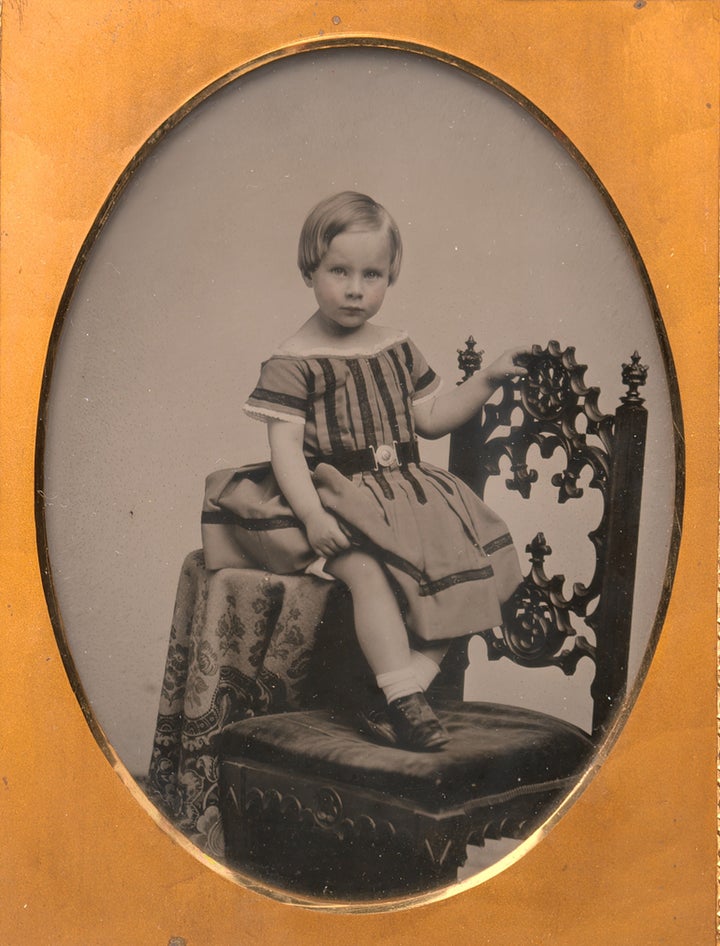
The makers of Mellin’s baby food recognized the inherent humor, too, putting it to use in a 1905 sex-guessing contest, according to Paoletti.
“Mellin’s ad featuring twenty babies in the Ladies’ Home Journal promised a generous reward to readers who accurately guessed the sex of the most babies,” the professor writes in “Pink and Blue.” “When the contest results were revealed in a later issue, not one contestant had correctly guessed the sex of all twenty babies.”
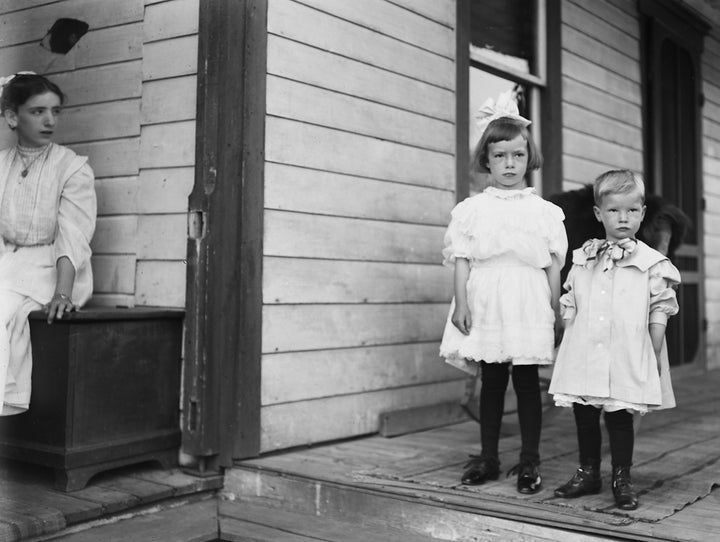
The history of the white dress as a gender-neutral staple for children teaches us that many of the gendered norms we take for granted are the product of social and cultural forces, said McCrory Calarco, the sociology professor and author of one of the viral tweets.
“They aren’t the product of ‘natural’ differences between girls and boys or women and men, as some politicians, pundits and parents have tried to suggest,” McCrory Calarco told HuffPost.
When did boys start dressing “like boys”?
This early era of gender-neutral dress didn’t last. By the 1900s, Paoletti said that the white gowns for boys began to go out of vogue, disappearing entirely from everyday dress for even the youngest boys by around 1920.
Gradually, dresses were reclassified as feminine, rather than neutral. Breeching ― the occasion when a small boy was first dressed in breeches or trousers ― came earlier, and the era of emerging gender signifiers such as pink and blue began around the 1940s.
“This transformation happened so recently that there are men living today who wore dresses as children, and it took place so thoroughly that we appear to have forgotten that dresses were ever for boys as well as girls,” Paoletti writes in her book.
The only vestigial proof we have that girls and boys used to wear white dresses is the ceremonial christening gown, which all infants still wear today.
So what happened? Part of the answer may lie in industrialization and the fact that children’s clothing became mass-produced rather than made at home.
Boys’ clothes and girls’ clothes as separate entities was a handy way to increase sales, according to Amy Ogata, a professor of art history at the University of Southern California and the author of “Designing the Creative Child: Playthings and Places in Midcentury America.”
“The scholar Daniel Thomas Cook pointed to the design of the department store layout, which is quite distinct in its separation of boys’ from girls’ clothes, and preteens from babies,” Ogata said.
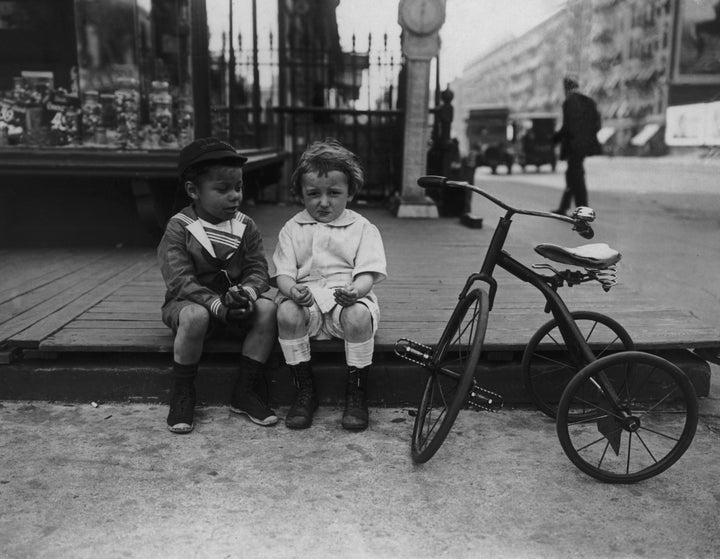
But ideology ― particularly the push for a more rigid gender binary between boys and girls ― played a part in the white dress’ disappearance, too.
Like the Target dad, parents were more actively concerned with how their boys dressed.
“There was the idea that boys needed more than just time to learn to be little men,” Paoletti told HuffPost. “They needed to ‘identify’ with adult men, especially their fathers. And it couldn’t wait until they were 6 or 7; it needed to happen ‘the earlier the better’: we see earlier breeching, earlier haircuts.”
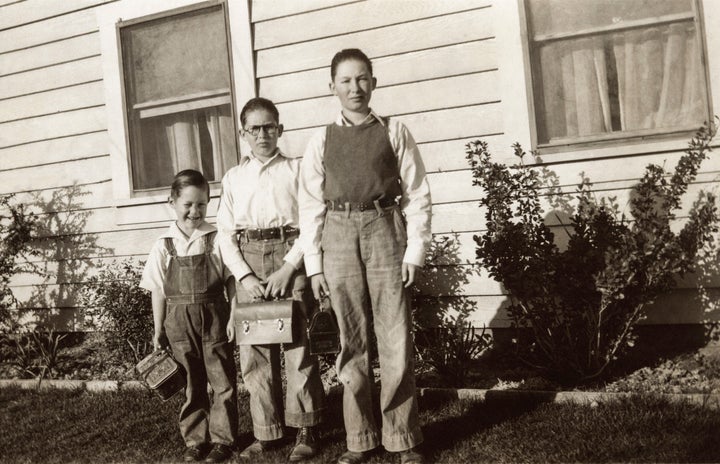
Parents “invested much more effort in masculinizing their sons than feminizing their daughters, because fear of sexual depravity ― particularly the supposed physical and psychological danger of masturbation and the threat of homosexuality — was focused almost completely on boys,” Paoletti writes in her book.
This pattern wouldn’t change again until the mid 1960s into the mid ’80s, when the first baby boomers became parents. As the women’s movement began to critique rigid gender norms, the baby clothes manufactured by retailers mirrored the cultural change: It’s when we start to see more gender fluid designs and unisex prints.
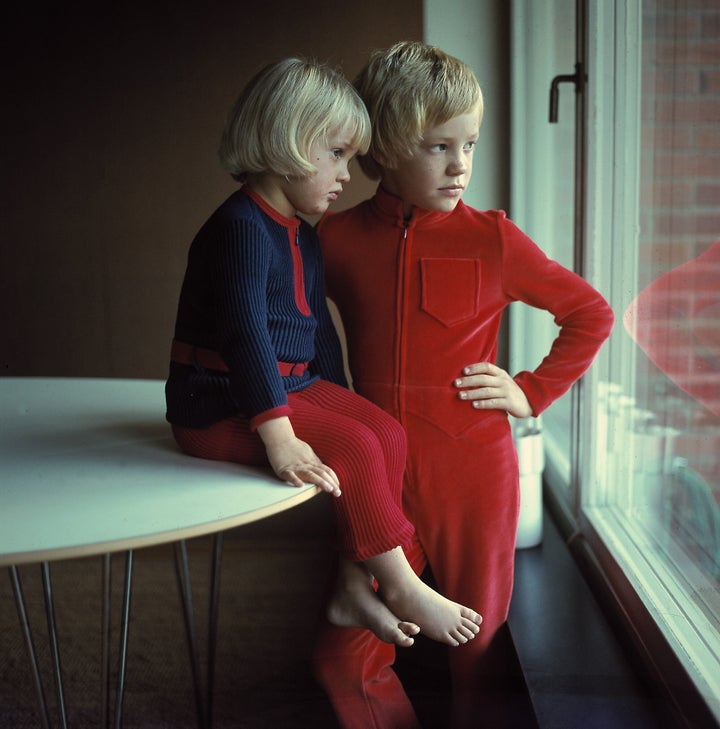
By the late ‘80s and ’90s, Paoletti says the “Reign of Pink” returned, with parents strongly favoring gendered kids’ clothing.
That brings us up to today ― an era of dressing which in some ways anything goes. Some parents cling hard to pink-and-blue gender expectations. Others opt for gender-neutral clothing: what’s been dubbed the “sad beige baby” aesthetic, for instance, or just basic kids tees with baby animals, dinosaurs, Disney characters and rainbows, like the Target dad was raging against.
“It’s interesting that it’s the adults who seem to care about this more than the children themselves,” Ogata said, before drawing on her personal experience to illustrate the unavoidable gender anxiety that still exists.
“My son was born in 2000 and when he was a baby, I put him in some hand-me-down rompers I was given (pastels, prints, stripes) and my sitter made a point of commenting that this seemed to disturb the other sitters and parents they would encounter at the playground,” the professor said.
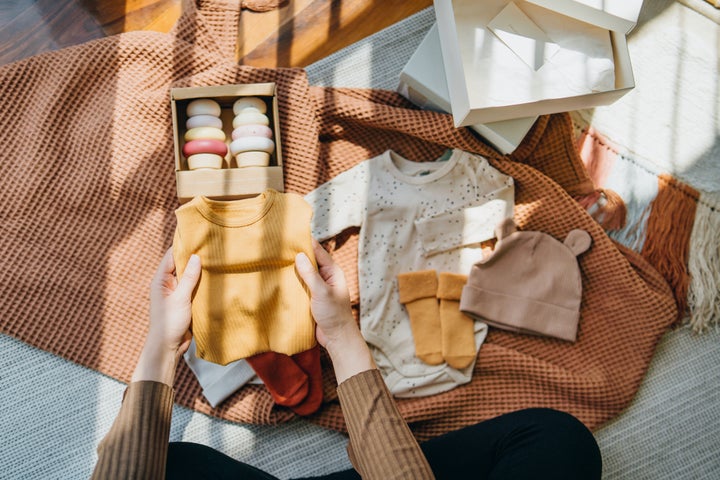
When Ogata’s son was in preschool, he liked twirling around in skirts from the dress-up box. The teachers made a point of telling her this, as if it was a warning.
“The Target dad is an extreme form of this cultural disapproval,” she said. “As a culture, Americans seem very intent on letting others know there’s a difference, and to act ― or react ― accordingly. The proliferation of gender reveal parties and bows on hairless babies is a phenomenon in itself.”
Up until a certain age, kids don’t care. By the time that people reach adulthood, though, they’ve been exposed to a plethora of gender socialization and gender anxiety; socialization that, if we think about things like gender reveal parties, begins even before children are born, McCrory Calarco said.
“By studying the messages that kids get about gender, and by studying how those messages have changed over time, people come to see (and are often very surprised to see!) that the gender divisions we currently take for granted aren’t as ‘natural’ as they seem to be,” she said.
Credit: Source link